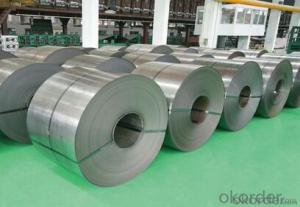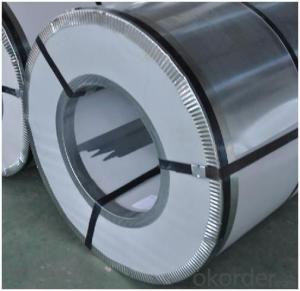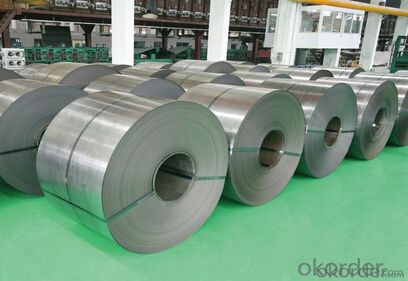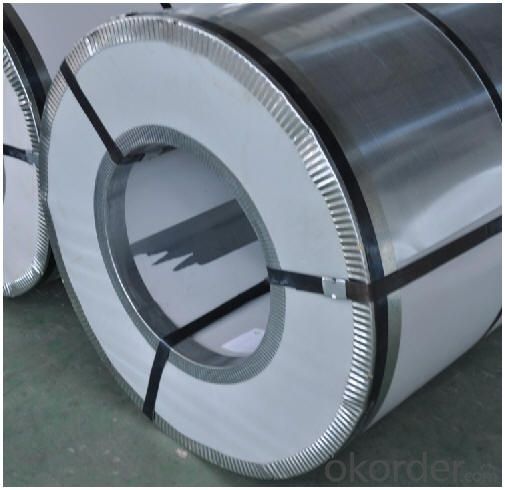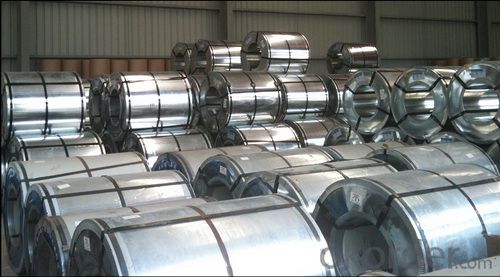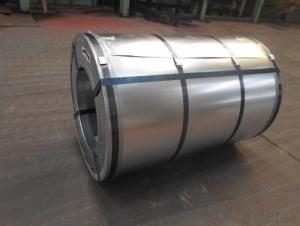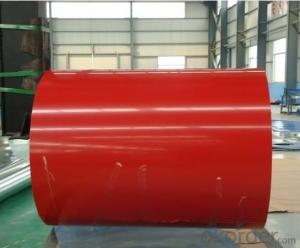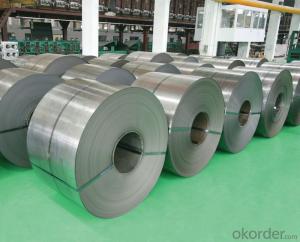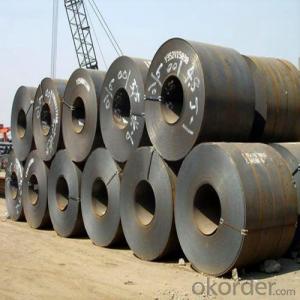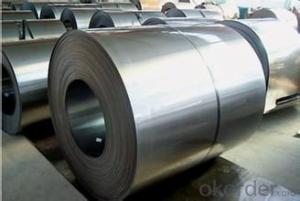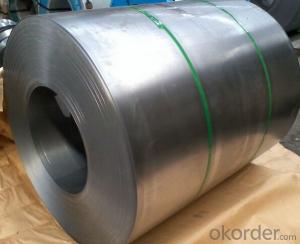Cold Rolled Steel Coil with High Quality and Wide Reputation
- Loading Port:
- Shanghai
- Payment Terms:
- TT OR LC
- Min Order Qty:
- 100 m.t.
- Supply Capability:
- 5000 m.t./month
OKorder Service Pledge
OKorder Financial Service
You Might Also Like
1.Structure of Cold Rolled Steel Description:
The raw material of cold rolled steel coil/sheet is high quality hot rolled product, and after pickling continuous rolling, degreasing, annealing,skin pass,slitting and cut to length line etc. Along with it many kinds of new technology and new process of global cold rolling production have been applied. Therefore the quality of the goods could be guaranteed. The product is widely used in outdoor and interior decoration, furnishing manufacturing, home appliance, automobile etc.
2.Main Features of the Cold Rolled Steel:
• Excellent process capability
• Smooth and flat surface
• Workability, durability
• Excellent heat resistance performance
• High strength
• Good formability
• Good visual effect
3.Cold Rolled Steel Images
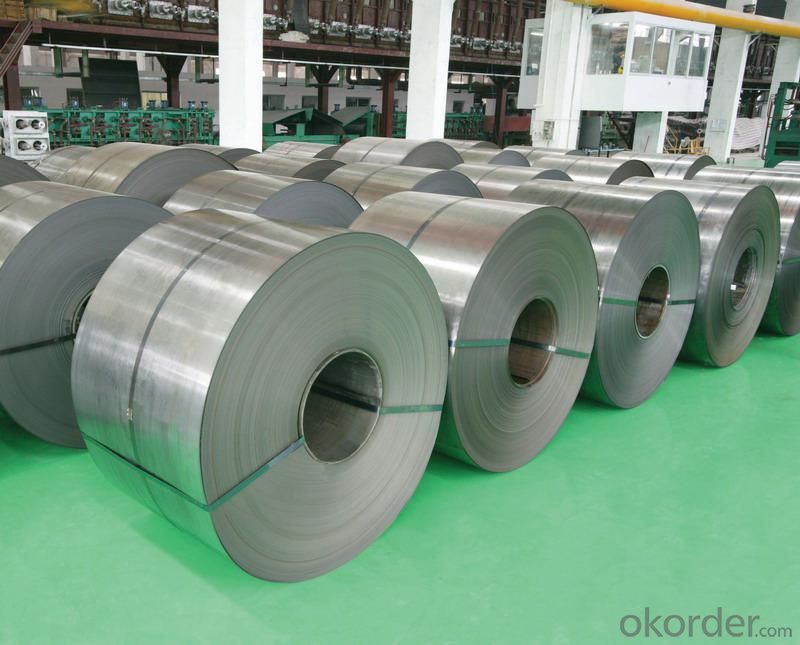
4.Cold Rolled Steel Specification
Standard:AISI,ASTM,DIN,GB,JIS,JIS G3302 ASTM 653M EN10142
Grade: Q195~Q345
Thickness: 0.16mm~1.5mm,0.16-1.5mm
Width: 1250,600-1250mm
Coil weight:3-12 MT
Coil ID:508/610mm
Chemical composition:
C | Si | Mn | Cr | Ni | P | S |
0.150 | 0.476 | 11.231 | 12.50 | 0.900 | 0.039 | 0.010
|
5.FAQ of Cold Rolled Steel
We have organized several common questions for our clients,may help you sincerely:
2.How to guarantee the quality of the products?
We have established the international advanced quality management system,every link from raw material to final product we have strict quality test;We resolutely put an end to unqualified products flowing into the market. At the same time, we will provide necessary follow-up service assurance.
3. How long can we receive the product after purchase?
Usually within thirty working days after receiving buyer’s advance payment or LC. We will arrange the factory manufacturing as soon as possible. The cargo readiness usually takes 15-25 days, but the shipment will depend on the vessel situation.
- Q: What is the (balanced) chemical equation for steel?
- This Site Might Help You. RE: Chemical equation for steel? What is the (balanced) chemical equation for steel?
- Q: describe the benifits and disadvantages of the using steel as a material for fasteners
- Relatively cheap, strong, and non-toxic. For Carbon Steel alloys rust and corrosion are problems. For stainless alloys, cost becomes the problem [and corrosion is not eliminated]
- Q: How are steel coils used in the production of HVAC ductwork?
- Steel coils are used in the production of HVAC ductwork as they are rolled into thin sheets and then formed into the desired shape to create the ducts. The coils provide strength and durability to the ductwork, ensuring it can withstand the high temperatures and pressure of air conditioning and heating systems.
- Q: I would like to know if steel is basically a very dense crystal, or if it is a different atomic structure
- Steel is made of billions, trillions of very small crystals. This is true of most metals. In order to see the crystal structure of steel, you usually need to cut a sample of it, grind and polish the cut face smooth, then etch the steel with a mixture of nitric acid and alcohol. Without polishing and etching the crystals aren't visible- it just looks like smooth solid metal. Also, in most cases the crystals are small enough that you need a microscope to see them clearly after etching.
- Q: how simple is it to take it scrape steel and recyle it. does annybody know the process . i want to do this but first i need some basic information. as far as i know first to melt the steel and in a furness on high heat and than give the shape that customer wants. how right or wrong am i . i want to start on a very small scale.
- right. May need some coke to remove iron oxide
- Q: So, I'm looking into steel toe paddock boots. I'll be using them around horses, horses that I don't know and that are rescue horses. I'm currently looking at Equitector the Moorland paddock boots. They're $200, and I think I have to order them online. I like boots that are this style (the Moorland style)... Is there any other brand of boots that has steel toe paddock boots, that are cheaper or that I can buy in stores?
- Steel toe boots are good for working in construction or industrial type situations. But around horses, they're not necessarily the best choice. If a horse steps on you while you're wearing steel toe boots, the steel has the potential of bending and crushing your foot. And since it's steel, it won't bend back. It'll stay bent into your foot until you can find someone to help you get the boot off. I suggest buying paddock boots that are designed to be a bit safer around horses.
- Q: What is the role of steel coils in the production of storage tanks?
- Steel coils are used in the production of storage tanks as they provide the necessary material for constructing the tank's shell. The coils are shaped and welded together to form the cylindrical structure, ensuring strength and durability. Additionally, the use of steel coils allows for customization, enabling the tanks to be built to specific sizes and capacities.
- Q: How are steel coils used in the manufacturing of fuel systems?
- Steel coils are commonly used in the manufacturing of fuel systems to create various components such as fuel tanks, pipes, and fittings. These coils are often shaped, cut, and welded to form the desired fuel system parts. The high strength and durability of steel make it an ideal material for fuel systems, ensuring the safe and efficient transportation of fuel.
- Q: What are the safety considerations when handling steel coils?
- There are several safety considerations that should be taken into account when dealing with steel coils. Firstly, it is crucial to wear the correct personal protective equipment (PPE), such as gloves, safety glasses, and steel-toed boots. This protective gear helps minimize the risk of injuries from sharp edges, flying debris, or accidental contact with the coils. Secondly, it is important to have a clear understanding of the weight and dimensions of the steel coils being handled. Steel coils can be extremely heavy, and improper lifting techniques can lead to back strains, muscle pulls, or even more severe injuries. Therefore, it is crucial to employ proper lifting techniques, such as bending the knees and maintaining a straight back, or using lifting equipment like cranes or forklifts when necessary. Moreover, steel coils can be unstable and susceptible to rolling or shifting during handling. To avoid accidents, it is vital to secure the coils adequately before moving or stacking them. This can be achieved by using appropriate lifting attachments, binding the coils together, or utilizing racks or other storage systems specifically designed for steel coils. Additionally, it is important to be aware of the potential hazards associated with the steel coils, such as sharp edges, oil or grease coatings, or even damage to the coils themselves. It is essential to inspect the coils for any irregularities or defects before handling them, as well as ensuring that they are stored safely and securely to prevent accidents. Lastly, proper communication and training are crucial when dealing with steel coils. Establishing clear channels of communication between workers is essential to ensure that everyone is aware of their roles and responsibilities. Furthermore, providing training on safe handling techniques, potential hazards, and emergency procedures can significantly reduce the risk of accidents and injuries. In conclusion, when handling steel coils, it is important to wear the appropriate PPE, employ proper lifting techniques, secure the coils adequately, be mindful of potential hazards, and ensure effective communication and training. By adhering to these safety considerations, the risk of accidents and injuries can be greatly diminished.
- Q: What is the process of recoiling steel coils?
- The process of recoiling steel coils involves uncoiling the steel coil, straightening any bends or kinks, and then rewinding it into a tighter coil, ready for further processing or transportation.
Send your message to us
Cold Rolled Steel Coil with High Quality and Wide Reputation
- Loading Port:
- Shanghai
- Payment Terms:
- TT OR LC
- Min Order Qty:
- 100 m.t.
- Supply Capability:
- 5000 m.t./month
OKorder Service Pledge
OKorder Financial Service
Similar products
Hot products
Hot Searches
Related keywords
